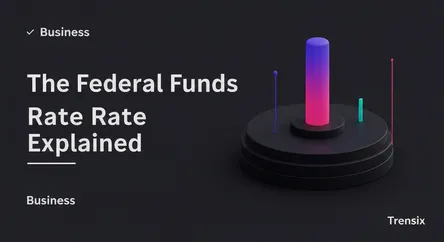Business
The Federal Funds Rate Explained

Discover the key interest rate set by the Fed that influences everything from credit cards to mortgage rates in the US economy.
What is it?
The federal funds rate is the target interest rate that commercial banks charge each other to borrow or lend their excess reserves overnight. It is a crucial tool of monetary policy set by the Federal Open Market Committee (FOMC), the policy-making arm of the Federal Reserve. The Fed doesn't directly force banks to use this rate, but it uses open market operations—buying or selling government securities—to adjust the money supply and guide the effective rate towards its target, influencing the nation's entire economic landscape.
Why is it trending?
The federal funds rate is consistently in the news because of its direct role in managing the U.S. economy. When inflation is high, the Fed often raises the rate to cool down the economy by making borrowing more expensive. Conversely, during economic downturns, it lowers the rate to stimulate growth. Recent global inflation and debates about whether the economy is heading for a recession or a 'soft landing' have put every FOMC meeting and rate decision under intense scrutiny from investors, businesses, and consumers alike.
How does it affect people?
Changes in the federal funds rate create a ripple effect that directly impacts personal finances. When the rate goes up, banks raise their prime rates, leading to higher interest on variable-rate credit cards, home equity lines of credit (HELOCs), and new auto loans. Mortgage rates also tend to follow suit. This makes borrowing more expensive, which can slow consumer spending. When the rate falls, borrowing becomes cheaper, potentially encouraging spending and investment. It also affects savings accounts, as banks may offer higher interest yields to attract deposits when the federal funds rate is higher.